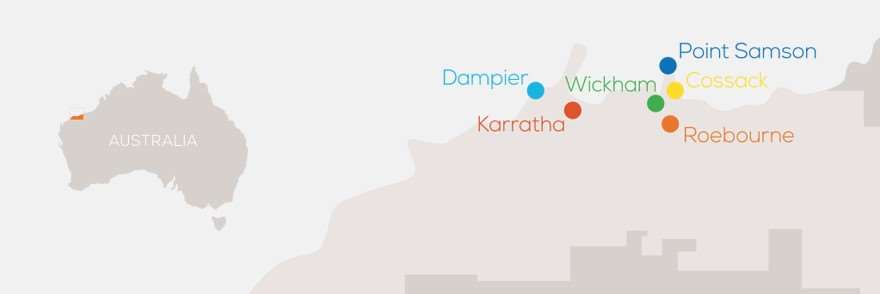
Location : Karratha, North West, Western Australia
Karratha is a city in the Pilbara region of Western Australia, adjoining the port of Dampier. Karratha is located just off the North West Coastal Highway, 1535 kilometres north of Perth and 240 kilometres south of Port Hedland.
It was established in 1968 to accommodate the processing and exportation workforce of the Hamersley Iron mining company and, in the 1980s, the petroleum and liquefied natural gas operations of the North West Shelf Venture.
The mining construction expansion over the last 10 years has seen a change in demographics and population growth in Karratha which has become a vibrant regional hub.
Karratha Health Campus replaces the ageing Nickol Bay Hospital (NBH) – commissioned 35 years ago – and the Warambie community and population health centre.
The Karratha Health Campus is the biggest investment in a public hospital ever undertaken in regional WA. It has an expanded emergency department, a new CT scanner, a brand new surgical centre, new delivery suites and maternity wing, world-class Telehealth services, new and expanded outpatients and essential services such as child health and medical imaging, all under one roof.
KHC is the largest health infrastructure investment in regional WA’s history and heralds a new era in healthcare facility design for the Pilbara region.
Like Nickol Bay Hospital, the new campus has been designed to withstand the extreme climate and conditions of the Pilbara region.

To create a cost-effective solution to keep stored water at a low temperature in hot climates. Utilising a cold water circulating pump, the tank required insulation so that the amount of heat penetration did not outweigh the cooling cycles of the tank.
Because of its location, the tanks also needed to withstand Cyclonic Region D wind categories. To ensure the tank met the AS/NZS 1170.2 Impact Test Regime for Horizontal Trajectories. This simulated windborne debris testing of tank external skin was conducted at James Cook University.
The Pilbara coast experiences more cyclones than any other part of Australia. Since 1910 there have been 48 cyclones that have caused damaging wind gusts in excess of 90 km/h in the Karratha, Dampier and Roebourne region. On average this equates to about one every two years. About half of these cyclones have an impact equivalent to a category one cyclone. Ten of these: 1925, 1939, 1945, 1954, Shirley 1966, Sheila-Sophie 1971, Trixie 1975, Chloe 1984, Orson 1989 and John 1999 have caused very destructive wind gusts in excess of 170 km/h*.
Since the 1960s the development of the mining and offshore oil and gas industries has increased the damage potential of cyclones. Substantial economic losses can be incurred even with the threat of a cyclone impact owing to lost production or disruptions to shipping activities. Fortunately, the modern towns of Karratha and Dampier have been built according to cyclone wind ratings and are far less susceptible to damaging winds than those properties in earlier times.
http://www.bom.gov.au/cyclone/history/wa/roebourne.shtml
The client had worked with Allied Pumps before, so when they were awarded the contract to supply plumbing services to the new Karratha Health Campus they knew Allied would be able to provide the necessary services and expertise to meet the strict requirements of a brand new medical facility.
Having undertaken a range of projects in and around the Pilbara, Allied Pumps understands the harsh climate and the need to produce materials and products that can stand not only the test of time, but the extreme climate as well.
Allied Tanks are built to all relevant Australian Standards. They are corrosion resistant and tested to withstand cyclonic region D winds. We have supplied tanks to some of the most environmentally challenging regions in Western Australia, however the Karratha Health Campus gave us the opportunity to expand our own limits on what can be achieved with ingenuity in engineering.
In determining client needs, Allied Pumps engineered a cost effective insulated externally bolted circular sectional panel tank. However, with the additional thickness of the walls meant that the fittings had to be modified.
This was a potable water tank, so the nozzles needed to be poly or stainless steel. However, we knew that the site piping was HDPE so we opted to make them out of the same material. Because of the insulation the fittings could not be bolted directly onto the wall as the liner would not seal, we had to make a steel spacer for the inside fitting to bolt to and fix to the outside backing ring.
We were able to meet the client’s stringent requirements to produce a cost effective, potable water tank that could withstand the extreme weather conditions. Rising to the challenge, this project was Allied Pumps first insulated circular steel panel liner tank complete with a cold water circulating program.

Contact us to learn about how we can help you with your pump needs.
CALL US NOW EMAIL US